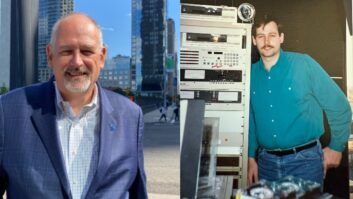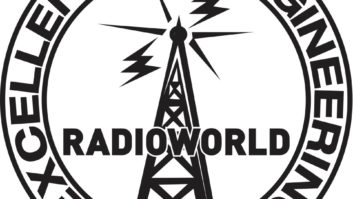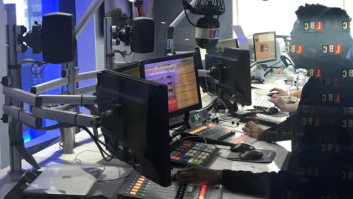
Gary Kline
by Paul McLane
Editor in Chief/U.S.
Prepping for our recent Webinar, I collected thoughts about industry trends from several leading engineers and industry observers. I got lots of good stuff and am sharing some of it in a series of blog posts. (See my earlier discussion with David Layer of NAB here.)
This Q&A is with Gary Kline. He’s VP of engineering and IT for Cumulus.
McLane: What was the most important technology trend or event you observed at the NAB Show of relevance to radio broadcast engineers and managers? Or to put it another way, if you bumped into an engineering colleague who didn’t get to NAB and he asked you what was the most interesting thing you’d seen there, what would you say?
Kline: Trend? I would say in general, the ever decreasing number of radio engineers there — including many regular faces not present this time. I think that’s a trend which is obviously reflective of the state of the radio and media industry, which is a result of the economy overall.
It’s important because it signals what we’ve been talking about the past few years — that we need increased technology and ingenuity to allow us to do more with less. We absolutely need product development to continue in this direction.
I spent a great deal of my time this year meeting with vendors discussing ideas (ranging from large-picture new product design to small suggested improvements in current products) with a few simple core requests: less expensive, less difficult to install or use, less difficult and costly to maintain, high degree of reliability.
McLane: Were there two or three specific products or new technologies that really arrested your attention? Why?
Kline: Axia PowerStation and the Harris HD Link.
The PowerStation signals a new path in audio over IP. It’s an all-in-one box with reduced cost. It’s exactly what I’m looking for in a studio console set-up: lower cost, simple to install, easier to maintain and reliable. The very same things I am asking vendors to accomplish. I believe so much in what Axia is doing to achieve those goals I became their first customer of the new product, using PowerStation to energize some of our studios in our new Cincinnati studio/office complex. I’ve also challenged the folks at Axia to find additional ways to reduce the costs of consoles in the future beyond the great steps they have taken so far.
I like the HD Link because it finally brings STLs to the next level, something many of us have been asking for. This STL incorporates many advanced features which allow adjustment and alignment via IP and even offers redundancy using same. It gives additional channels of audio vs. its predecessor the CD Link as well as incorporates the direct transmission of the HD UDP stream directly into its architecture. [Ed. Note: Both of these products were Radio World “Cool Stuff” winners; see video demos here.]
McLane: How is the economy affecting U.S. radio broadcasters’ capital plans?
Kline: Like every other expense category, it’s caused a reduction. I don’t think there is any broadcaster out there who would say they’ve significantly increased their capital spending budget this year. I could be wrong on that but everyone I’ve spoken to confirms they’ve cut back to the essentials.
I think the interesting question would be to ask everyone how they are making their approve/reject decisions these days. What is the criteria for approving a capital expense? How does that differ from 2008 or 2007 or even 2000? As a market-level engineer, what do you need to know to increase your chances of having your dollar request approved in the new world?
McLane: What is the state of the HD Radio rollout? How does the answer affect your business, if at all?
Kline: I have not polled every domestic radio broadcaster out there so I can’t answer this question with absolute certainty. But I am fairly confident that most U.S. broadcasters have slowed their rollout plans or at least have undertaken a review of them.
This would be in part due to the fact that many of us have already rolled out HD in the top 100 markets (which we serve). And the other part would have to do with the economy, ROI, and choosing carefully how we allocate capital budget.
McLane: What do you feel is the most notable technology trend reflected in radio broadcast product design?
Kline:Audio over IP, netadata over IP. Simplification (merging) of the IP infrastructure. And a continued influence for everything IP. As an example, transmitters now come with IP connections for sharing of information and control.







